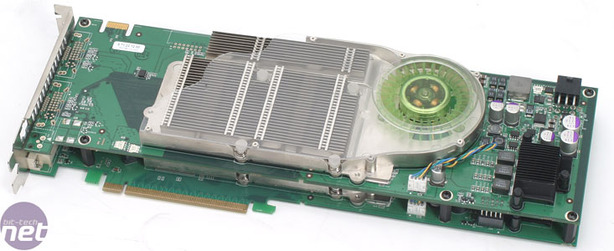
Rounding things up...
We think it's fair to say that we were more than a little disappointed with the performance and - more importantly - the stability of Quad SLI over our suite of real-world game tests. Here is a summary of our thoughts.Real-world usage: You are going to see no benefit from running Quad SLI below 1920x1200 resolution. Quad SLI is designed for the ultra-high end, and you will actually see a performance deficit if you try and run it at 1280x1024 because of the slower GPU clocks. NVIDIA recommends a 30" monitor to go with the setup, which runs at 2560x1600.
Performance: When it works, there is a benefit to be seen from Quad SLI. It really does enable super levels of image quality, and frame rates beyond other graphics solutions, as we saw in F.E.A.R. Of course, the one major issue is that this kind of performance grunt would be perfectly suited to running simultaneous HDR lighting and AA. Unfortunately, the 7900 series just doesn't support that, making the claims of superlative-defying image quality rather difficult to swallow.
Bugs: However, despite the performance, there are just far too many bugs in this version of the hardware and software to make Quad SLI even worth considering, never mind recommending. The performance isn't consistent, the stability is also a bit of a lottery, too.
We've been through multiple video cards and more driver revisions than you can shake a stick at. We discovered so many issues and bugs in the drivers that we weren't sure where to start when it came to writing up this evaluation. Major games - like The Elder Scrolls IV: Oblivion and Call of Duty 2 - just don't work as they should on Quad SLI. Any consumer buying Quad SLI right now is going to have a hell of a time trying to get their system working acceptably. If we can't smooth out all the bugs, and damn, if NVIDIA can't smooth out all the bugs, there's not a lot of hope for the average consumer trying to work out why their system keeps crashing in their favourite game.

However hard the company tried, it was simply unable to make Quad SLI function as it should in a wide selection of popular games. To put it succinctly, every time a bug was fixed, there seemed to be another one uncovered.
NVIDIA has said that making regular dual-card SLI to work over a wide range of games was difficult; Quad SLI required 'a whole new level' of driver programming. We wonder whether it is just a step too far?
Final Thoughts...
Quad SLI is a technology that simply isn't ready for the prime time. Having four graphics cards in your rig is undoutedly cool, and if the setup had worked properly it could - quite possibly - give you jaw-dropping gaming performance at obscene resolutions with equally obscene image quality settings.However, it's clear that NVIDIA has not yet mastered the issues that come with having four cards working together on graphics rendering. It doesn't quite need to go all the way back to the drawing board, since the principles - ultra image quality, AFR of SFR - are all sound. This implementation of the hardware could be stable in the future, because it is the drivers that are letting Quad SLI down at the moment.
There are far too many major bugs in Quad SLI and it needs of lot more work in NVIDIA's labs before it is anything like ready for public use. We just hope that system builders hold on to systems before shipping them out in the current state, as there are likely to be a lot of very disappointed customers.

MSI MPG Velox 100R Chassis Review
October 14 2021 | 15:04








Want to comment? Please log in.